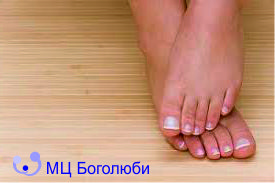Among the multiple diseases of the nails, unghia incarnita (ingrown nail) is undoubtedly one of the most common. Ingrown nails, as a rule, appear in young people aged 20 to 30 years. Men are at greater risk. This phenomenon is extremely rare in children and newborns, probably because their nails are thin and soft. Causes and risk factors The problem of unghia incarnita occurs when the nail leaves its bed, slowly penetrating the skin and flesh nearby. This usually affects the big toe, less commonly the hands. If the nails are cut too short or their edges are bent, as a rule, they begin to grow abnormally or sideways, laying the foundation for unghia incarnita. In addition to the above reasons, there are other important risk factors responsible for nail ingrowth. These include: arthritis, congenital deformity of the foot, diabetes, excessive sweating, fungal infection, obesity, wearing too tight shoes and poor foot hygiene. Ingrown toenails can also be a side effect due to long-term retinoid therapy. Symptoms and complications Unghia incarnita always causes pain, discomfort, redness and localized edema. Often there are small blisters filled with a yellowish or milky liquid, which upon opening give an unpleasant odor. The pain caused by an ingrown toenail is aggravated by wearing tight-fitting shoes. Sometimes it is so strong that even a light touch on the affected finger becomes painful. If the nails are not processed properly, unghia incarnita can cause localized infectious processes of various sizes. As the infection progresses, it spreads to surrounding tissues, causing abscesses or osteomyelitis. Particularly devastating complications of unghia incarnita are observed in the case of diabetes due to poor blood circulation. Treatment of unghia incarnita The good news is that ingrown nails tend to be cured spontaneously. But, despite this, the consultation of the surgeon Bogoliuby MC in certain cases is recommended to minimize possible risks and complications. Our surgeon uses a technique that prevents re-ingrowth. The advice of a doctor is especially necessary in cases of: diabetes; immunodeficiency; pathology of the feet. In general, the treatment of unghia incarnita depends on the severity of the condition. If the problem is superficial, it makes sense to resort to conservative therapy, which includes hot baths, the use of antibacterial agents and the use of a cotton pad, which should be put directly under the edge of the nail. A relatively effective alternative to reduce the symptoms caused by an ingrown nail is an elastic bandage. This method involves the physical "stretching" of the skin of the finger next to the ingrown nail. Wrapping a finger can reduce pressure and, at the same time, improve drainage of pus, (if any). If the ingrown nail penetrates deep into the skin and causes a complicated infectious process, it is necessary to resort to partial surgical excision of the nail plate. It should be noted that to prevent surgical intervention, an innovative method has recently been developed, which consists in the use of a special bracket. This contributes to adequate growth and correction of the curvature of the affected nail. Preventive measures The best way to prevent the problem of onychocryptosis is to cut the nails properly. It is very important to keep them a certain length. The cut must be straight. Avoid cutting nails in a curved manner. Another important recommendation regarding ingrown nails is to not use needles or other sharp objects to open any fluid-filled blisters formed near the ingrown nail so as not to be at risk of new infections. The role of personal hygiene is extremely important. It is recommended to change socks (exclusively cotton) at least once or twice a day. Sleeping is recommended without socks in case feet " to breath". Finally, only comfortable shoes should be worn so that the nail has enough free space for proper growth.
Number of views: 11625
















